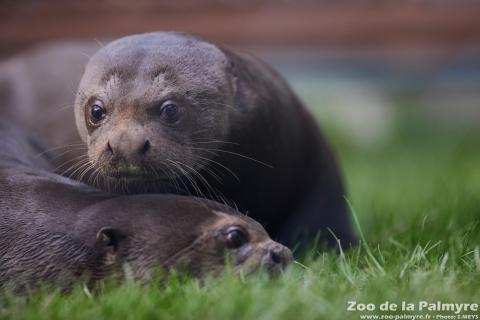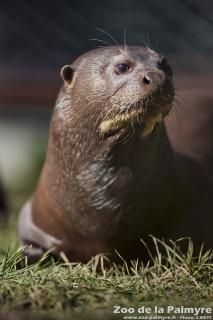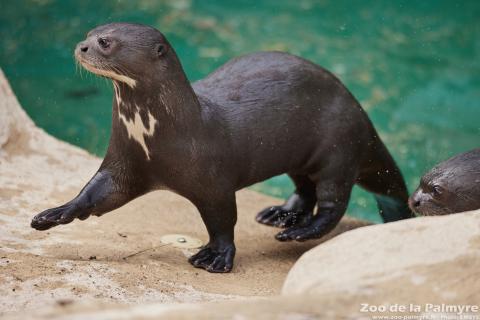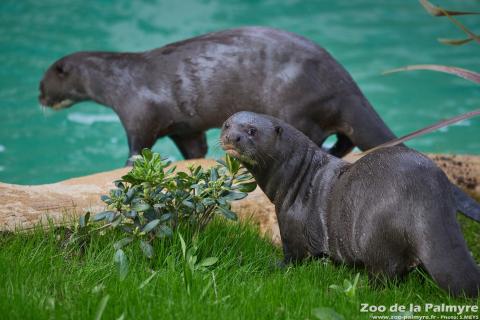Giant Otter

Giant Otter

-
Class
Mammalia -
Order
Carnivora -
Familly
Mustelidae
-
 1-1.70m
1-1.70m -
 25-32kg
25-32kg -
 65 to 72 days
65 to 72 days -
 1–4
1–4 -
 8 years (15-20 years in captivity)
8 years (15-20 years in captivity)
-
Diet
carnivorous (fishes, crustaceans, molluscs) -
Habitat
rivers, lakes, swamps -
Range
Amazon and Orinoco basins -
 This species is part of a European Breeding Program
This species is part of a European Breeding Program
-
Population in the wild
En diminution -
IUCN REDLIST status

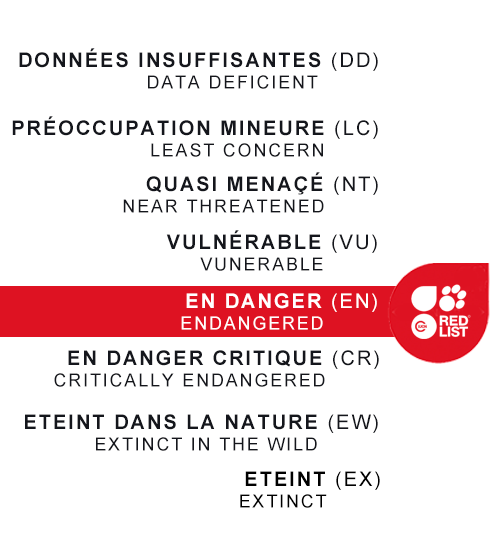
The longest of all otter species is easily recognizable to its flattened head and the creamy-white markings that cover its lower lip and throat. As one of the top predator in aquatic ecosystems, it is nicknamed the “River Wolf” in South America.
The Giant Otter lives in small family groups of 6 to 8 individuals reigning over a territory of about 20 sq. m that they mark with urine, fecal matter and the musky odor produced by their scent glands at the base of their tail. The family includes the breeding pair, one or more sub-adults and the young of the year. Weighing around 200g and measuring around 30cm at birth, the pups are reared until the age of 6 weeks in a natural shelter located on the banks of the river and called “catiche”. They are weaned after 9 months and reach their sexual maturity at 2 years.
Giant otters mainly feed on fish, almost 3kg each day, that they eat in water or on land. Their slender body, webbed feet as well as the powerful tail that propels them at high speed underwater make them unparalleled hunters. Giant otters are very social and playful animals. They spend a lot of time grooming, playing and resting together when they’re not looking for prey in water.
Decades of hunting for pelts has decimated giant otter populations: in the mid-70s the species was in danger of extinction in most of its range. Even if some populations have recovered thanks to the ban on pelt trade and national protection laws, the giant otter remains severely threatened by the destruction of its habitat, overfishing, water pollution (due to gold mining, fossil fuel exploration an pesticides), diseases transmitted by domestic animals and mismanaged tourism.

